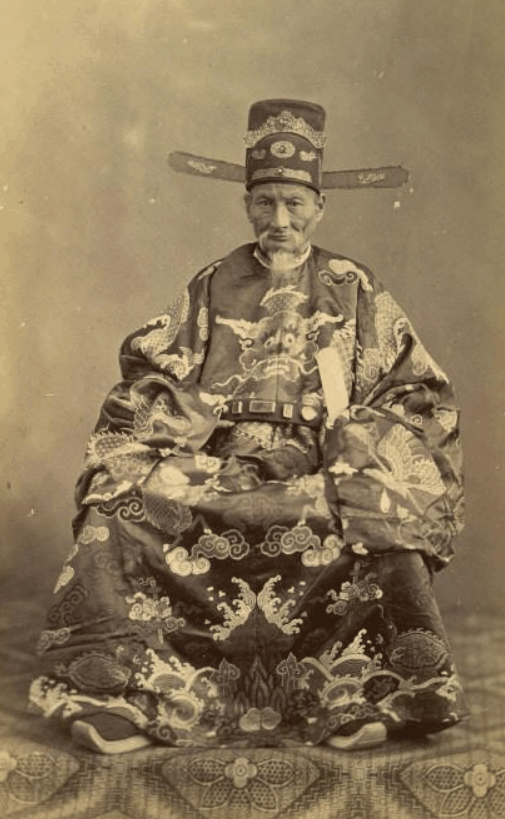In 1862, the Nguyễn Dynasty granted the French some land in the Mekong Delta, after it had been occupied by French and Spanish forces.
A year later the Nguyễn court sent the official, Phan Thanh Giản, to Paris to try to negotiate the return of that land. While Phan Thanh Giản was in Paris, he was photographed, probably making him one of the first Vietnamese to be photographed.
I was recently browsing through the wonderful digital collection that the Bibliothèque nationale de France has created, when I came across a work which has pictures of the other members of this embassy.
Much to my surprise, I found a picture of this woman here.
The citation accompanying this pictures is as follows: “Ambassade Cochinchinoise à Paris. 1863. Marie Vannier, 40 ans, née à Hué de Seu-Dong cochinchinoise, et de Mr Vannier, officier de la Marine Française, chevalier de la Légion d’honneur et grand Mandarin du roi d’Annam Gia Long.”
Gia Long had a group of Europeans who worked for him, and one of them, Mr. Vannier, apparently married a Vietnamese woman, Seu-Dong, and together they had a daughter, Marie.
They also had a son by the name of Michel: “1863. Michel Vannier, 51 ans, né à Hué de Sam-Diam cochinchinoise, et de Mr. Vannier, officier de la Marine Française, chevalier de la Légion d’honneur et grand Mandarin du roi d’Annam Gia-Long.”
Accompanying these two was then an elderly woman by the name of “Sam-Diam” who is described as a daughter of a Mandarin and “Vve” of Mr. Vannier. What does “Vve” stand for? If this was Mr. Vannier’s wife, then why is the mother of his children referred to as “Seu-Dong”? I’m confused (or my knowledge of French is too poor).
“Sam-Diam, 75 ans, Cochinchinoise née à Hué, fille de Mandarin et Vve de Mr. Vannier, ancien officier de la Marine Française, chevalier de la Légion d’honneur et grand Mandarin du roi Gia-Long; face.”
In any case, it is fascinating to see these métis, or mixed-blood, offspring participating on this diplomatic mission, but it also makes perfect sense. Such “cultural intermediaries” were essential.
Another form of “cultural intermediary” were Vietnamese Catholics, and some of these people also appear to have been part of this mission, such as Pédrô-Diếu an “Annamite” from Tonkin.
To view the complete set of pictures, and to see the source information, click on the link below:






Nhận xét
Đăng nhận xét